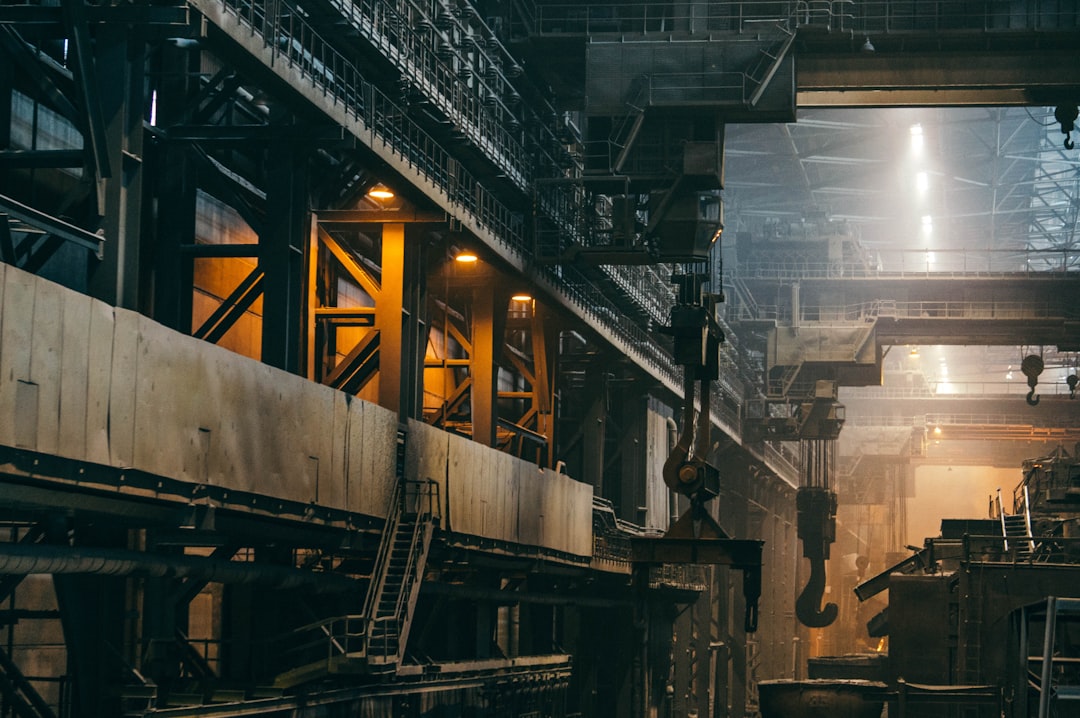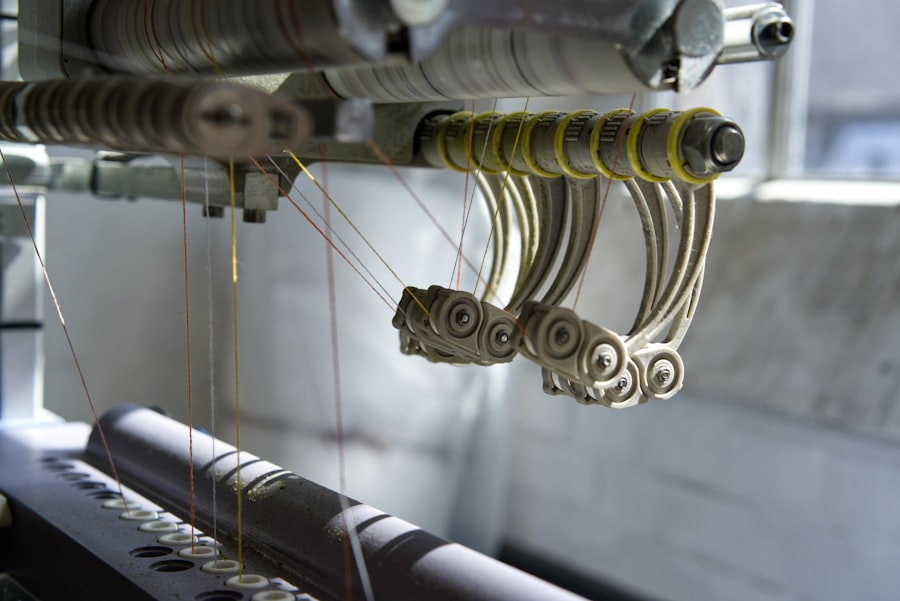
Assemblers and fabricators play a crucial role in the manufacturing sector, serving as the backbone of production processes across various industries. These skilled workers are responsible for assembling components into finished products, ensuring that each piece fits together seamlessly to create a functional whole. The work they do is often intricate and requires a keen eye for detail, as well as a solid understanding of the materials and tools involved in the assembly process.
From electronics to automotive parts, assemblers and fabricators are essential in bringing products from concept to reality. The significance of assemblers and fabricators extends beyond mere assembly; they are integral to maintaining quality control and efficiency in production lines. Their expertise not only ensures that products meet industry standards but also contributes to the overall productivity of manufacturing operations.
As technology advances, the role of assemblers and fabricators is evolving, incorporating new tools and techniques that enhance their capabilities. This evolution reflects the dynamic nature of the manufacturing industry, where adaptability and skill development are paramount.
Key Takeaways
- Assemblers and fabricators play a crucial role in manufacturing by putting together components and products.
- Job duties include reading blueprints, using hand tools and machines, and inspecting finished products for quality.
- A high school diploma or equivalent is typically required, with on-the-job training provided by employers.
- The job outlook for assemblers and fabricators is stable, with a median annual wage of around ,000.
- There are different types of assemblers and fabricators, including electrical, structural metal, and fiberglass fabricators.
Job Duties and Responsibilities
Assembly Tasks and Technical Knowledge
In industries such as automotive, assemblers may be tasked with installing engines, transmissions, or electrical systems into vehicles, requiring both precision and technical knowledge. They must interpret technical drawings and schematics to ensure that each assembly meets the required specifications.
Quality Control and Inspection
In addition to assembly tasks, assemblers and fabricators are also responsible for conducting quality checks throughout the production process. This involves inspecting components for defects, measuring parts for accuracy, and testing finished products to ensure they function correctly.
Documentation and Attention to Detail
Assemblers and fabricators must document their work meticulously, noting any issues that arise during assembly and reporting them to supervisors. This attention to detail is critical, as even minor errors can lead to significant problems down the line, affecting product performance and safety.
Education and Training Requirements

While formal education requirements for assemblers and fabricators can vary by industry, most positions typically require a high school diploma or equivalent. However, many employers prefer candidates who have completed vocational training or have some experience in manufacturing or assembly work. Technical schools and community colleges often offer programs that provide hands-on training in relevant skills, such as blueprint reading, welding, or electronics assembly.
On-the-job training is also a common pathway for aspiring assemblers and fabricators. New hires often work alongside experienced professionals who guide them through the assembly process and teach them how to use various tools and equipment safely.
Additionally, some employers may offer further training opportunities or certifications that can enhance an assembler’s qualifications and career prospects.
Job Outlook and Salary
| Job Title | Job Outlook | Median Salary |
|---|---|---|
| Software Developer | 22% growth from 2020 to 2030 | 110,140 per year |
| Registered Nurse | 9% growth from 2020 to 2030 | 75,330 per year |
| Financial Analyst | 6% growth from 2020 to 2030 | 83,660 per year |
The job outlook for assemblers and fabricators is generally positive, with steady demand expected in various sectors of the economy. According to the U.S. Bureau of Labor Statistics (BLS), employment for assemblers and fabricators is projected to grow at a rate of about 3% from 2021 to 2031, which is on par with the average for all occupations.
This growth is driven by ongoing advancements in technology and manufacturing processes, which require skilled workers who can adapt to new methods of production. In terms of salary, assemblers and fabricators can expect to earn a competitive wage that varies based on factors such as experience, industry, and geographic location. As of May 2022, the median annual wage for assemblers and fabricators was approximately $37,000.
For example, assemblers in the aerospace industry or those with expertise in electronics may command higher salaries due to the complexity of their work.
Different Types of Assemblers and Fabricators
Assemblers and fabricators can be found in a wide range of industries, each requiring specific skills and knowledge tailored to their unique production processes. In the automotive sector, for instance, assemblers focus on constructing vehicles by integrating various components such as engines, chassis, and electrical systems. This role demands a strong understanding of mechanical systems and often involves working with heavy machinery.
In contrast, electronic assemblers specialize in assembling intricate devices such as computers, smartphones, and other consumer electronics. This type of assembly requires precision soldering skills and familiarity with electronic components like circuit boards and microchips. Additionally, there are fabricators who work with metals or plastics to create parts for machinery or consumer goods.
These professionals may use techniques such as welding, machining, or injection molding to produce high-quality components that meet strict industry standards.
Advancement Opportunities

Career Growth within the Production Environment
Many companies offer pathways for career growth that allow employees to move into supervisory or management roles within the production environment. For instance, an assembler who consistently performs well may be promoted to a lead position where they oversee a team of workers, ensuring that production goals are met while maintaining quality standards.
Specialized Training and Certifications
Further education and specialized training can open doors to more advanced positions within the manufacturing sector. Assemblers who pursue certifications in areas such as quality control or lean manufacturing may find themselves eligible for roles that involve process improvement or project management.
Transitioning to Related Fields
Furthermore, some individuals choose to transition into related fields such as engineering or design after gaining experience on the shop floor, leveraging their hands-on knowledge to contribute to product development.
Work Environment and Conditions
The work environment for assemblers and fabricators can vary significantly depending on the industry in which they operate. Generally speaking, these professionals work in manufacturing plants or assembly lines where they are surrounded by machinery and equipment necessary for production. The environment can be fast-paced and may require standing for long periods while performing repetitive tasks.
Safety is a critical concern in these settings; therefore, assemblers and fabricators must adhere to strict safety protocols to minimize the risk of injury. This includes wearing personal protective equipment (PPE) such as gloves, goggles, or ear protection when necessary. Additionally, workers must be trained in safe operating procedures for machinery and tools to prevent accidents.
Despite these challenges, many find the work rewarding due to its tangible results—seeing a finished product come together from individual components can be highly satisfying.
Conclusion and Final Thoughts
Assemblers and fabricators are vital contributors to the manufacturing landscape, playing an essential role in transforming raw materials into finished products that consumers rely on daily. Their responsibilities encompass a wide range of tasks that require both technical skills and attention to detail. As industries continue to evolve with technological advancements, the demand for skilled assemblers will likely remain strong.
With opportunities for advancement through experience and further education, those entering this field can look forward to a dynamic career path filled with potential growth. The work environment may present challenges related to safety and physical demands; however, many find fulfillment in being part of a process that brings innovative products to life. As such, assemblers and fabricators will continue to be indispensable players in shaping the future of manufacturing across various sectors.
If you are interested in learning more about careers in the USA as assemblers and fabricators, you may want to check out the article “Top 10 Highest Paying Skilled Trades in the USA” on Careers in the USA. This article provides valuable information on the top-paying skilled trades in the country, including insights into the salaries and job outlook for various occupations. It can be a helpful resource for individuals looking to explore different career options in the manufacturing industry.
FAQs
What are the typical job duties of assemblers and fabricators, all other?
Assemblers and fabricators, all other, perform a variety of tasks related to assembling and fabricating products. This can include cutting and shaping materials, assembling parts, and inspecting finished products for quality.
What skills are important for assemblers and fabricators, all other?
Important skills for assemblers and fabricators, all other, include attention to detail, manual dexterity, and the ability to use tools and machinery. They should also have good problem-solving skills and be able to work well in a team.
What education or training is typically required for a career as an assembler or fabricator?
Most assemblers and fabricators, all other, receive on-the-job training, although some may also complete a formal apprenticeship or vocational program. A high school diploma or equivalent is typically required.
What are the working conditions like for assemblers and fabricators, all other?
Assemblers and fabricators, all other, often work in manufacturing plants or factories. The work can be physically demanding and may involve standing for long periods of time. They may also be exposed to loud noises and potentially hazardous materials.
What is the job outlook for careers in this field?
The job outlook for assemblers and fabricators, all other, varies by industry. Overall, employment in this field is projected to decline slightly in the coming years due to automation and outsourcing, but there will still be opportunities for those with the right skills and experience.



